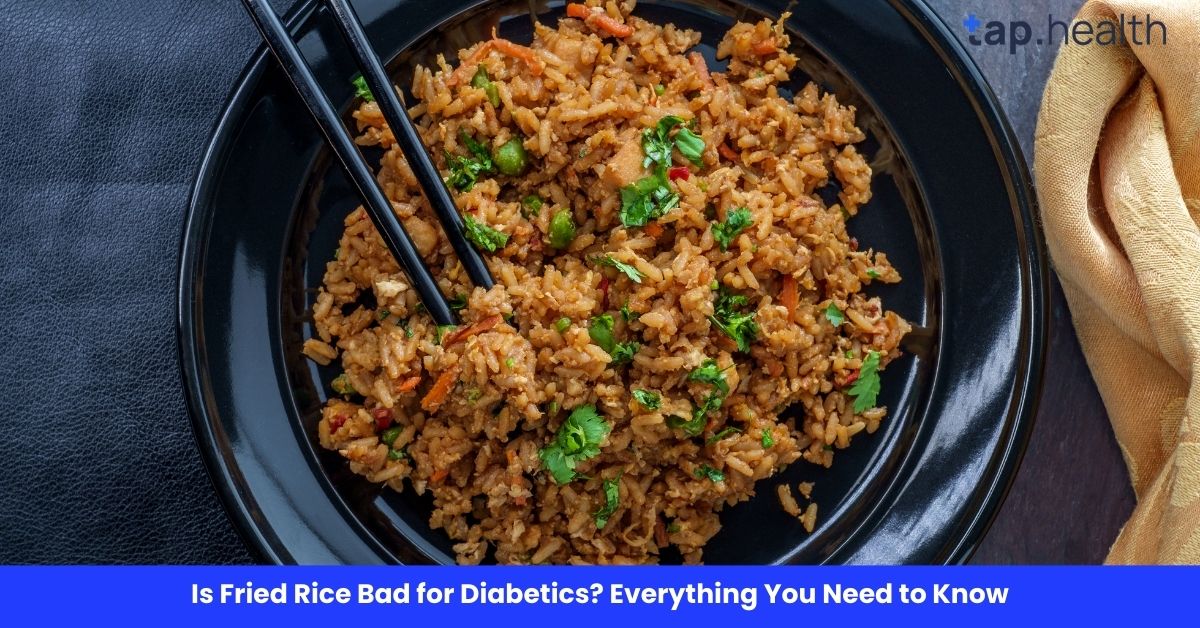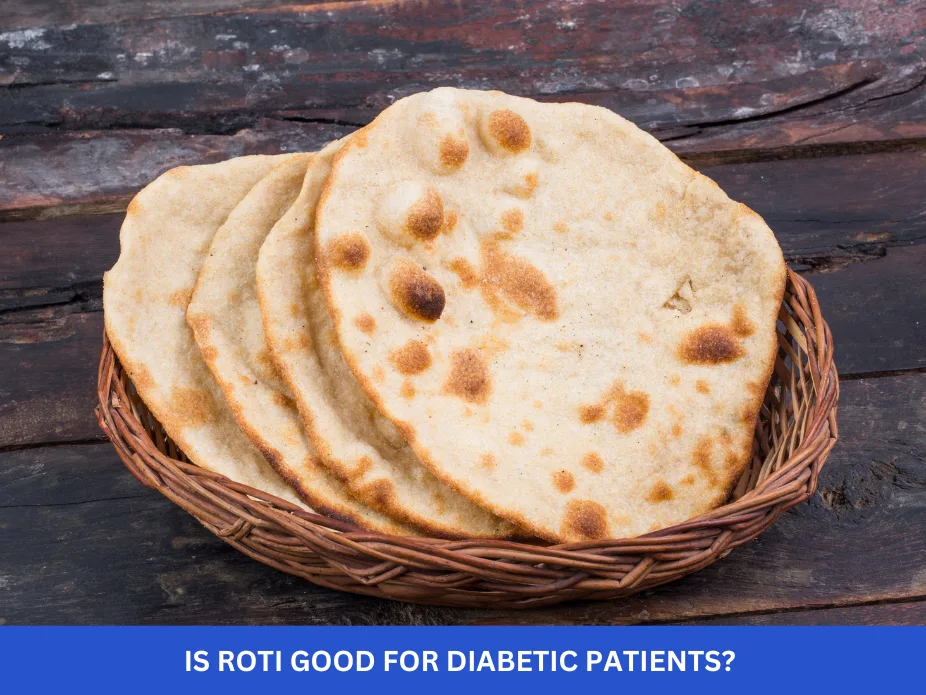Fried rice is a beloved dish across many cultures, offering a perfect combination of flavors and textures. But for those with type 2 diabetes, the question arises: Is fried rice bad for diabetics? The answer depends on various factors such as the type of rice used, the cooking method, and the portion size.
In this detailed guide, we’ll explore whether fried rice is a good choice for diabetics, how it impacts blood sugar, and what adjustments can be made to make it a healthier option. We’ll also discuss healthier alternatives and provide answers to frequently asked questions.
Table of Contents:
- What is Fried Rice?
- How Fried Rice Affects Blood Sugar Levels
- Is Fried Rice Bad for Diabetics?
- The Role of Rice in Diabetes Management
- Health Risks of Eating Fried Rice with Diabetes
- Can Diabetics Eat Fried Rice in Moderation?
- Healthier Ways to Prepare Fried Rice
- Alternatives to Fried Rice for Diabetics
- Frequently Asked Questions (FAQs)
- Conclusion
What is Fried Rice?
Fried rice is a dish made by stir-frying cooked rice with a variety of ingredients, such as vegetables, soy sauce, eggs, and sometimes meat or tofu. It is often made with leftover rice, making it a quick and easy meal. The rice is typically stir-fried in oil, giving it a crispy texture and rich flavor.
While it’s a versatile dish, the nutritional content of fried rice can vary depending on the type of rice used and the cooking method. Typically, fried rice is made with white rice, but other types of rice, such as brown rice or jasmine rice, can also be used.
For diabetics, it’s important to be mindful of the types of ingredients and cooking methods used when preparing fried rice to manage blood sugar levels effectively.
How Fried Rice Affects Blood Sugar Levels
One of the most important factors for diabetics when considering whether fried rice is suitable is the glycemic index (GI) of the rice. The glycemic index measures how quickly a food raises blood sugar levels. Foods with a high GI can cause rapid spikes in blood glucose levels, which can be problematic for people with diabetes.
White Rice and Glycemic Index
White rice, which is commonly used in fried rice, has a high GI, typically around 70 to 80. This means it can quickly raise blood sugar levels after consumption. For people with diabetes, foods that cause rapid increases in blood glucose should be consumed in moderation, as they can make it more difficult to maintain stable blood sugar levels.
The issue with white rice lies in the fact that it is highly processed, removing most of the fiber, which is essential for slowing down the absorption of glucose. This makes it an unfavorable option for diabetics when consumed in large quantities.
Brown Rice as an Alternative
On the other hand, brown rice has a lower GI (about 50 to 60) compared to white rice. It is also higher in fiber, which helps regulate blood sugar levels by slowing glucose absorption. Choosing brown rice over white rice can help lower the glycemic impact of fried rice, making it a more diabetes-friendly option.
However, it’s still important to be mindful of portion sizes, as even brown rice can cause blood sugar spikes if consumed in large amounts.
Is Fried Rice Bad for Diabetics?
Fried rice is not the best choice for diabetics because it’s usually made with white rice, lots of oil, and high-sodium sauces, which can raise blood sugar quickly. However, if prepared with brown rice or other whole grains, plenty of vegetables, less oil, and eaten in small portions, it can be made healthier and more suitable for diabetics.
High Glycemic Index of White Rice
As mentioned earlier, white rice has a high glycemic index, which means it can cause a rapid increase in blood glucose levels. Consuming fried rice made with white rice regularly can lead to higher blood sugar levels, which is a concern for people with diabetes who need to carefully manage their glucose levels.
The Impact of Fried Foods
Fried rice is usually cooked in oil, which adds extra calories and unhealthy fats to the dish. Consuming too many fried foods can lead to weight gain, which can worsen insulin resistance. Additionally, the high fat content in fried foods can increase the risk of heart disease, which is already elevated in people with diabetes.
The Sodium Content in Soy Sauce
Soy sauce, a common ingredient in fried rice, is often high in sodium, which can contribute to high blood pressure. People with diabetes are already at higher risk of heart disease and high blood pressure, so it’s important to limit sodium intake to reduce these risks.
The Role of Rice in Diabetes Management
Rice, as a carbohydrate-rich food, plays a significant role in diabetes management. Carbohydrates directly affect blood sugar levels, and choosing the right type of rice can make a difference in how the body processes these carbohydrates.
The Importance of Glycemic Index (GI)
As discussed, foods with a low glycemic index are less likely to cause a rapid spike in blood sugar. When managing diabetes, it’s important to choose low-GI foods as much as possible. Brown rice is a great option because it has a lower GI and contains more fiber than white rice.
Portion Control
Even if you choose a lower-GI rice, portion control is still essential. Large servings of any carbohydrate can lead to an increase in blood sugar levels. For diabetics, it’s important to limit the portion size of rice and balance it with other foods like vegetables, lean proteins, and healthy fats.
Combining Rice with Fiber and Protein
To minimize the blood sugar impact of fried rice, consider adding more non-starchy vegetables and lean proteins, such as chicken, tofu, or shrimp. The fiber in the vegetables will help slow down the absorption of glucose, while the protein will help stabilize blood sugar levels.
Health Risks of Eating Fried Rice with Diabetes
While fried rice can be enjoyed in moderation, it does come with some health risks for diabetics if consumed too frequently or in large portions.
Blood Sugar Spikes
Consuming fried rice made with white rice and large amounts of oil can lead to spikes in blood sugar levels. This is especially true if fried rice is consumed as part of a large meal with other high-carb foods. Managing blood sugar is a critical part of diabetes management, and frequent spikes can lead to complications.
Weight Gain and Insulin Resistance
Fried rice is calorie-dense, and if made with too much oil, it can contribute to weight gain. Being overweight can worsen insulin resistance, making it more difficult for the body to regulate blood sugar. This is why portion control and healthier cooking methods are key when preparing fried rice.
Heart Disease Risk
People with diabetes are at an increased risk of heart disease, and consuming too many fried foods can increase this risk. Fried foods are often high in unhealthy fats, which can raise cholesterol levels and contribute to cardiovascular disease.
Can Diabetics Eat Fried Rice in Moderation?
Yes, diabetics can enjoy fried rice in moderation, but it’s important to make healthier modifications. Opt for brown rice instead of white rice, use less oil, and add plenty of vegetables to balance the meal. It’s also a good idea to limit portion sizes to avoid excessive carbohydrate intake.
Fried rice can be part of a healthy diet for diabetics if prepared thoughtfully and consumed occasionally, as part of a balanced meal plan. However, it should not be a regular part of the diet if blood sugar control is a concern.
Healthier Ways to Prepare Fried Rice
If you’re a diabetic and still love fried rice, there are healthier ways to prepare it without sacrificing flavor. Here are a few tips:
1. Use Brown Rice
Swap white rice for brown rice, which has a lower glycemic index and more fiber. Brown rice helps slow the release of glucose into the bloodstream, making it a better choice for diabetics.
2. Use Less Oil
Instead of using a lot of oil to fry the rice, use a minimal amount of healthy oil, like olive oil or avocado oil. These oils contain heart-healthy monounsaturated fats that are better for overall health.
3. Add More Vegetables
Include a variety of non-starchy vegetables like spinach, broccoli, peppers, and carrots. These vegetables are low in calories and carbohydrates, while also providing essential nutrients and fiber.
4. Limit Soy Sauce or Use Low-Sodium Soy Sauce
Soy sauce can be high in sodium, so try to limit its use or opt for a low-sodium version. This will help keep the sodium content in check and reduce the risk of high blood pressure.
5. Include Lean Proteins
Add lean proteins such as chicken breast, shrimp, or tofu to your fried rice. Protein helps stabilize blood sugar and promotes satiety, preventing overeating.
Real-Life Scenario
Consider the case of Raj, a 45-year-old software engineer diagnosed with type 2 diabetes. Raj enjoyed his weekly takeout of fried rice but noticed his blood sugar levels spiking after meals. After consulting with his healthcare provider, Raj learned that the high glycemic index of white rice and the added oils in fried rice were contributing to these spikes.
To manage his condition, Raj made several changes:
- Switched to brown rice for its lower glycemic index.
- Reduced the portion size of fried rice.
- Added more non-starchy vegetables like spinach and zucchini.
- Used olive oil for cooking to reduce unhealthy fat intake.
Within weeks, Raj observed more stable blood sugar levels and felt more energetic. His story highlights the importance of mindful eating and making informed dietary choices in managing diabetes.
Expert Contribution
Dr. Neha Sharma, a renowned endocrinologist specializing in diabetes management, emphasizes the significance of dietary choices in controlling blood sugar levels. According to Dr. Sharma:
“Fried foods, particularly those rich in refined carbohydrates and unhealthy fats, can lead to rapid spikes in blood glucose levels. For individuals with type 2 diabetes, it’s crucial to opt for foods with a low glycemic index and incorporate healthy fats to maintain stable blood sugar levels.”
Dr. Sharma recommends the following strategies for individuals with type 2 diabetes:
- Choose Whole Grains: Opt for whole grains like brown rice, quinoa, or barley instead of refined grains. These have a lower glycemic index and are rich in fiber, which helps regulate blood sugar levels.
- Incorporate Healthy Fats: Include sources of healthy fats, such as avocados, nuts, and olive oil, in your diet. These fats can improve insulin sensitivity and support overall health.
- Monitor Portion Sizes: Be mindful of portion sizes, especially when consuming carbohydrate-rich foods. Using smaller plates and measuring servings can help prevent overeating.
- Limit Fried Foods: While occasional indulgence is acceptable, it’s essential to limit the intake of fried foods. Consider healthier cooking methods like grilling, baking, or steaming.
Dr. Sharma’s insights align with current research, highlighting the importance of a balanced diet in managing type 2 diabetes.
Recommendations Grounded in Proven Research and Facts
Managing type 2 diabetes requires a comprehensive approach, and diet plays a pivotal role. Research has consistently shown that certain dietary patterns can help control blood sugar levels and reduce the risk of complications associated with diabetes.
1. Prioritize Low Glycemic Index Foods
Foods with a low glycemic index (GI) cause a slower, more gradual increase in blood sugar levels. Incorporating low-GI foods into your diet can help maintain stable blood glucose levels. Examples include:
- Whole Grains: Brown rice, quinoa, and barley.
- Non-Starchy Vegetables: Leafy greens, broccoli, and cauliflower.
- Legumes: Lentils, chickpeas, and beans.
2. Incorporate Healthy Fats
Healthy fats can improve insulin sensitivity and support overall health. Sources of healthy fats include:
- Monounsaturated Fats: Olive oil, avocados, and nuts.
- Omega-3 Fatty Acids: Fatty fish like salmon and flaxseeds.
3. Practice Portion Control
Monitoring portion sizes can help prevent overeating and manage blood sugar levels effectively. Strategies include:
- Using Smaller Plates: Helps control portion sizes visually.
- Reading Nutrition Labels: Provides information on serving sizes and nutritional content.
- Balancing Meals: Include a mix of carbohydrates, proteins, and fats in each meal.
4. Limit Intake of Fried and Processed Foods
Fried and processed foods are often high in unhealthy fats and refined carbohydrates, which can lead to rapid spikes in blood sugar levels. Opt for healthier cooking methods like:
- Grilling: Uses less fat and retains nutrients.
- Baking: A low-fat cooking method suitable for various foods.
- Steaming: Retains vitamins and minerals without added fats.
By implementing these research-backed strategies, individuals with type 2 diabetes can make informed dietary choices that support blood sugar management and overall health.
Alternatives to Fried Rice for Diabetics
If you’re looking for a healthier alternative to fried rice, consider these options:
1. Cauliflower Rice
Cauliflower rice is a low-carb, low-calorie substitute for traditional rice. It has a similar texture and can be stir-fried to make a diabetes-friendly version of fried rice.
2. Quinoa Fried Rice
Quinoa is a whole grain that is rich in fiber and protein. It has a lower glycemic index than rice, making it a great alternative for diabetics.
3. Zucchini Noodles
Zucchini noodles, or “zoodles,” are a low-carb, low-calorie alternative to rice. They can be stir-fried with vegetables and lean proteins for a tasty and healthy meal.
Frequently Asked Questions (FAQs)
1. Can Diabetics Eat Fried Rice?
Yes, but in moderation. Use brown rice, limit the amount of oil, and add plenty of vegetables and lean proteins to make it more diabetic-friendly.
2. Is Fried Rice High in Carbs?
Yes, fried rice is high in carbohydrates, especially if it’s made with white rice. However, switching to brown rice can help reduce the glycemic impact.
3. Can I Make Fried Rice Healthier?
Yes, by using brown rice, reducing oil, adding more vegetables, and using lean proteins. Also, consider using low-sodium soy sauce to reduce sodium content.
4. Is Cauliflower Rice a Good Alternative to Fried Rice for Diabetics?
Yes, cauliflower rice is a low-carb alternative to regular rice and is a great option for diabetics.
5. Can I Eat Fried Rice Every Day if I Have Diabetes?
It’s best to limit fried rice to occasional meals and make healthier modifications to ensure it fits into your diabetes management plan.
Conclusion
Fried rice can be a delicious and satisfying dish, but for diabetics, it’s important to be mindful of the ingredients and portion sizes. While white rice has a high glycemic index, switching to brown rice and using healthier cooking methods can make fried rice more suitable for people with diabetes. By making smart choices like adding more vegetables, lean proteins, and using less oil, you can enjoy fried rice without negatively impacting your blood sugar levels. Remember, moderation is key, and always monitor your blood sugar levels to ensure you’re making the best choices for your health.



